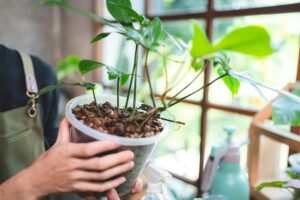Essential Tips for Growing Tropical Plants at Home


Growing tropical plants can bring your home or garden vibrant colors and lush greenery. These plants thrive in warm, humid environments, but with the right care and attention, you can grow them even in non-tropical climates. Whether you’re a seasoned gardener or a beginner, understanding the needs of tropical plants is key to creating a thriving indoor jungle or outdoor oasis. Here are some essential tips on how to grow tropical plants and keep them healthy.
Provide Adequate Light and Humidity
Tropical plants are native to environments with plenty of natural light and high humidity. To replicate these conditions at home, ensuring your plants receive the right amount of light is important. Most tropical plants prefer bright, indirect sunlight, so placing them near a window with filtered light or using sheer curtains can be ideal. Avoid exposing them to direct sunlight for extended periods, which can scorch their leaves.
In addition to light, humidity is critical for tropical plants to thrive. Many homes have dry air, especially during the colder months, which can cause tropical plants to suffer. One way to increase humidity is by misting your plants regularly or placing a tray of water near them to create a humid microclimate. Using a humidifier in the room where your plants are kept can also make a significant difference, especially for more sensitive varieties.
Choose the Right Soil and Pot
The type of soil you use is essential for the health of tropical plants. These plants typically prefer well-draining soil that retains moisture without becoming waterlogged. A good quality potting mix with organic matter like peat moss or coconut coir is ideal, providing the right moisture retention and drainage balance. You can also add perlite or sand to improve aeration in the soil, which helps prevent root rot.
Equally important is the choice of pot. Tropical plants do best in pots with drainage holes, which allow excess water to escape and prevent soggy roots. Choosing a pot that is appropriately sized for your plant is also important. While it might be tempting to use a larger pot to avoid frequent repotting, this can lead to overwatering and poor growth. Select a pot that allows room for root growth but is manageable.
Watering and Feeding Tips
Proper watering is crucial for tropical plants, but striking the right balance can be tricky. Overwatering can lead to root rot, while underwatering can cause the plant to wilt or dry out. It’s essential to check the moisture level of the soil before watering. Stick your finger about an inch into the soil; it’s time to water if it feels dry. Be sure to water thoroughly, allowing the water to drain out of the bottom of the pot, but avoid letting the plant sit in standing water.
Tropical plants also benefit from regular feeding, especially during the growing season. A balanced, water-soluble fertilizer once a month can help keep your plants healthy and encourage vigorous growth. Be mindful of your plant’s needs; some tropical plants may require different nutrient levels. Always follow the instructions on the fertilizer package to avoid overfeeding, which can lead to nutrient burn and damage to the plant.
Pruning and Maintenance
Regular maintenance is essential to keep tropical plants looking their best and to promote healthy growth. Pruning helps remove dead or yellowing leaves, improve air circulation around the plant, and prevent disease from spreading. It’s also a good way to control the shape and size of your plant, ensuring it doesn’t become too leggy or overgrown.
In addition to pruning, keeping an eye out for pests is important when caring for tropical plants. Pests like spider mites, aphids, and mealybugs can infest your plants, causing damage and spreading disease. Regularly inspect the leaves, especially the undersides, for signs of pests and take action if necessary. Using natural insecticides or gently wiping the leaves with water and dish soap can help control minor infestations.
Growing tropical plants at home can be a rewarding and enjoyable experience, adding a touch of the exotic to your space. By providing adequate light, humidity, and the right care, you can help your tropical plants thrive even in less-than-ideal conditions. Whether you’re growing them indoors or outdoors, these tips will set you on the path to creating a lush, tropical garden that brings beauty and greenery to your home year-round. With patience and attention, your tropical plants will reward you with vibrant growth and stunning foliage.
